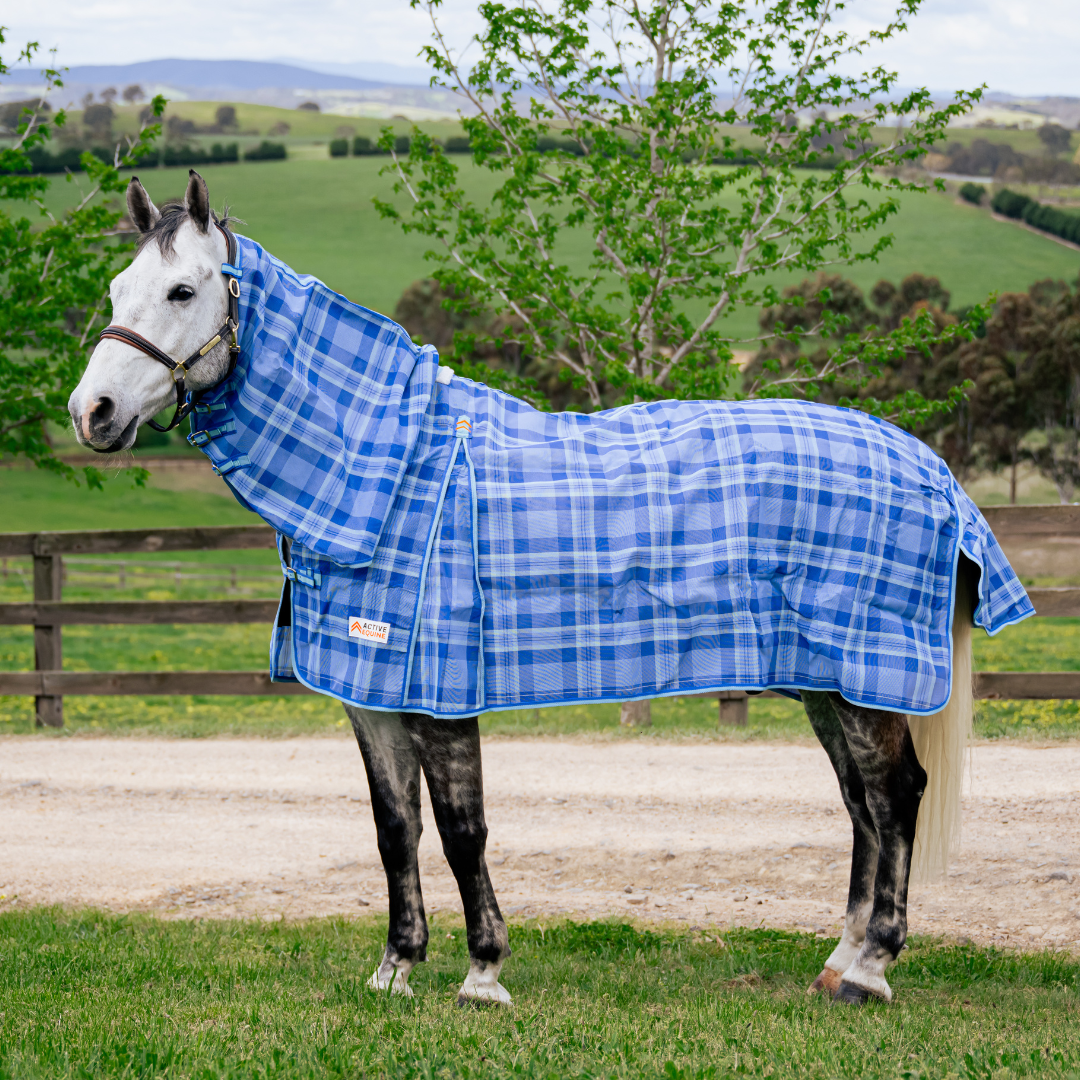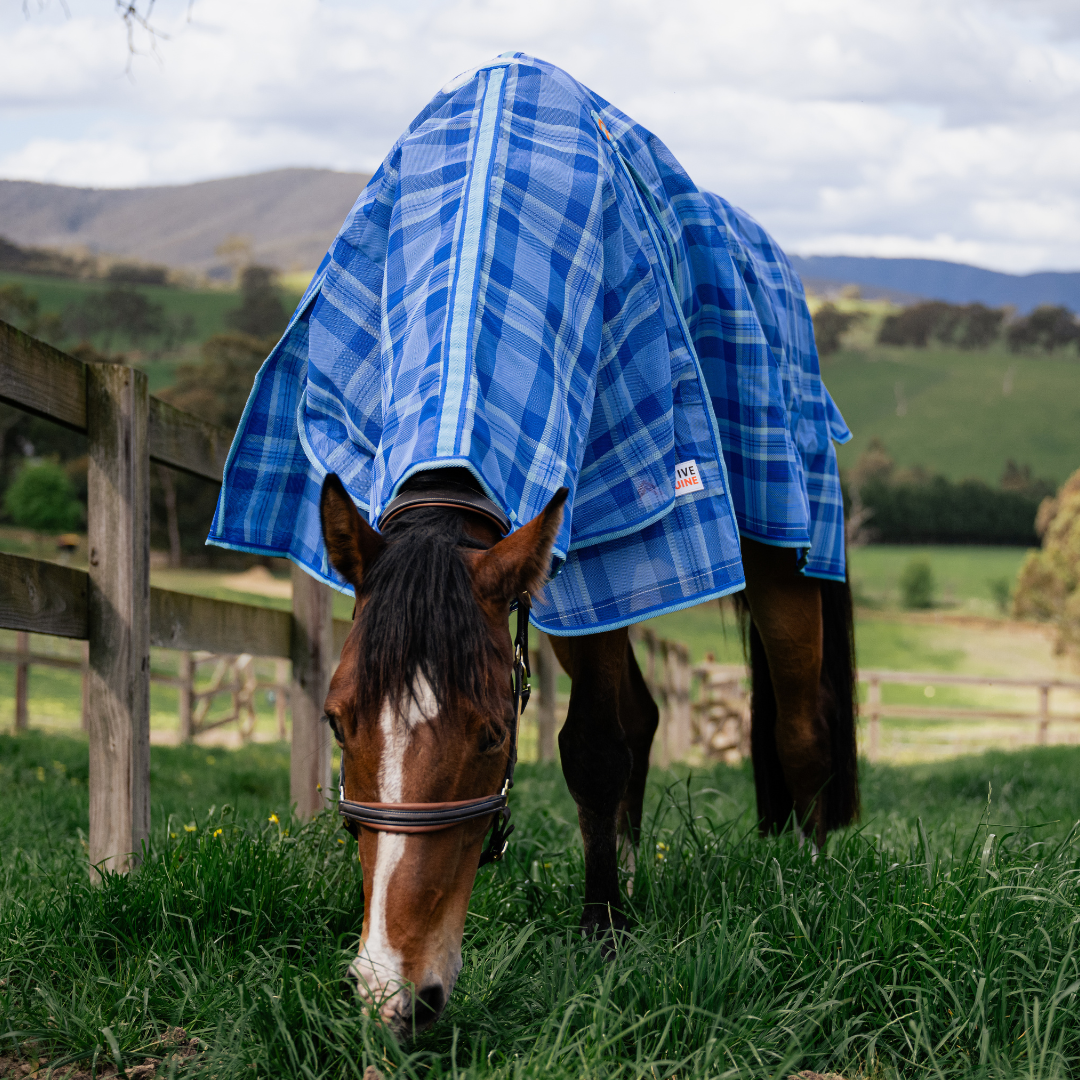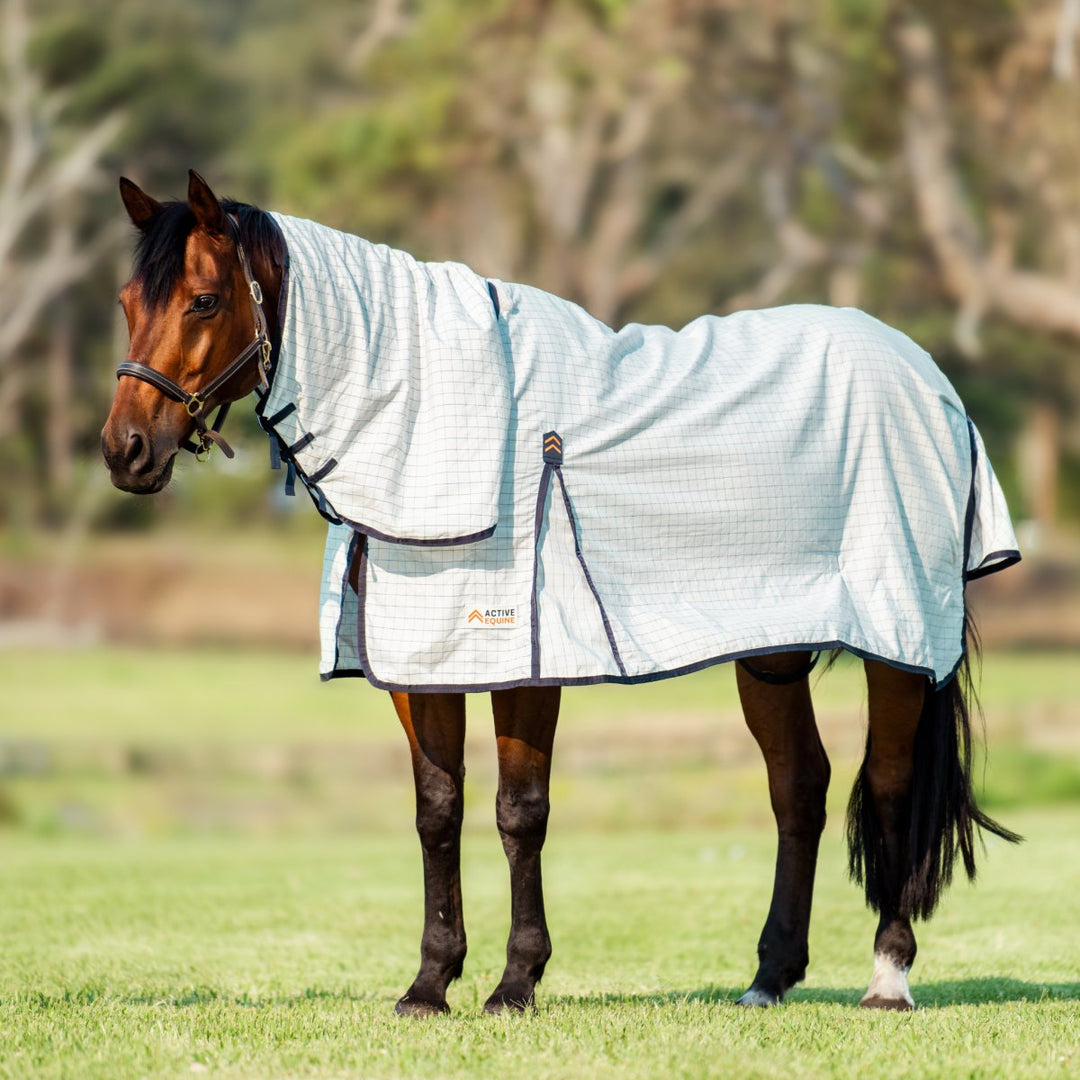Beat the Winter Chill: Keep Warm While Riding Your Horse This Winter
With winter approaching, dropping temperatures and shorter amounts of daylight are a concern for all horse owners. It's a completely valid concern too, because low temperatures can cause cold muscles, slower moving joints and leave your horse feeling stiff and uncomfortable.
If your horse is not warmed up properly, they are more susceptible to injury due to lowered shock absorption and flexibility. And then there’s sweaty horses with thick winter coats that take a really long time to dry off after work.
It’s not all doom and gloom though! Winter is a beautiful time to be spending time with your equine partner! Luckily, there are many ways to keep your horse warm before, during, and after your ride.
Warm Up Their Muscles
An adequate warm-up is always important, but especially in the winter. Your horse is more likely to be injured if you immediately start an intense workout after getting on. Instead, you need to give them plenty of time for their muscles to warm up. You can aid in this process both in and out of the saddle.
Before you get on, take your time grooming them. Don't rush to get tacked up. Vigorously brush them with a curry comb for a few minutes. This will increase circulation and blood flow to the muscles, warming them up faster. Not to mention, grooming is a great way to bond with your horse and keep their coat in pristine condition.
Consider adding a quarter sheet to your winter tack collection. These drape over your horse's back, keeping the major large muscles in their hindquarters warm. Our Kentucky Horsewear quarter sheets are lined with artificial rabbit fur, which keeps your horse warm by creating tiny air pockets that retain body heat. Quarter sheets are beneficial to any horse, but they are especially helpful for horses who are clipped and need the extra heat. If you ride outdoors, a waterproof quarter sheet might be better suited for you so your horse can stay protected from the elements!
Once mounted, begin your ride with at least five to ten minutes of brisk walking. Then, continue the flatwork with five minutes each of trotting and cantering. This stretches and warms the muscles, preparing your horse for exercise. A long warm-up is especially important for injury prevention if you are planning to jump or school difficult dressage maneuvers.
Keep Them Dry
It takes longer for a horse's coat to dry in the winter due to the increased length of hair. While their thick coats are usually beneficial for keeping them warm, they can become an inconvenience to those that ride heavily during the winter. If your horse gets sweaty during a ride, their coat cannot aid in warming them until it is dry. This is why some riders choose to body clip their horses for the season.
After your ride, throw a fleece rug on your horse. This helps them dry faster by wicking away moisture like sweat. Once they dry, you can put a regular rug on (like a PEI Titan Winter Rug w/ detachable neck) to keep them warm in their stable or paddock.
Indoors or Outdoors?
Some riders may choose to agist or float their horses to a property with an indoor arena. Or, they may choose to ride outdoors. Either way is fine, as long as the environment is safe for your horse. The ground may freeze in the winter (hello Tasmania and the alpine areas of the Mainland!), so keep an eye on this if you are planning to ride outside. Additionally, deep snow and ice can be dangerous hazards while riding, so be sure to take that into consideration.
In either situation, make sure the riding area is well-ventilated. Horses are more prone to respiratory diseases and illnesses in the winter because their stables tend to be closed up with no fresh air. This creates an environment where dust and bacteria thrive. When exercising, a horse's respiration rate increases and they take in more air, so your arena must have good ventilation and air quality.
Wherever you ride, a proper warm-up at the beginning of your ride will keep your horse warm throughout.
How Cold is Too Cold to Ride?
While unexpected, horses can actually work in most temperatures. It is more likely that the rider will be too cold to ride before the horse is. Frostbite and hypothermia are concerns for riders with exposed skin for extended periods. Listen to your body and don't ride if it's too cold outside for you. If you're warm enough to ride, then your horse probably is, too. Just take their fitness level into consideration as well; a fit horse is more equipped to handle cold weather than an out-of-shape horse.
How to Stay Motivated
Cold weather can sometimes make it undesirable to even step out of the house, let alone ride your horse. It's easy to lose motivation in the winter months. But regular exercise is still important for your horse, even in the cold. Plus, you need to keep your riding skills in tune.
There are ways to combat winter de-motivation. Write down your riding goals and remind yourself of them often. Make sure to include a few short-term goals, as these tend to work better for daily motivation. Try to make riding fun for you, so you'll look forward to it. Riding can get boring for you (and your horse) if you do the same thing every time, so throw something new or exciting into your routine to keep things interesting. These strategies will help you kick the winter blues and keep up with your riding.
Conclusion
As equestrians, our main goal is to keep our equines healthy. Cold temperatures make us work harder to achieve that goal, but it is absolutely worth it in the long run. Whether you ride indoors or outdoors, these tips will help you keep your horse warm for winter workouts. Quarter sheets and winter horse rugs can keep your horse toasty during and after your ride. Thorough warm-ups will prepare your horse's muscles and joints for harder exercise. Remember that your horse isn't warm if they aren't dry, so consider adding a moisture-wicking fleece rug to your post-ride regimen. Good luck riders, and stay warm this winter with your horse!
Products Mentioned
Titan 300g Winter Rug 1680D (with detachable neck) | PEI: https://activeequine.com.au/products/titan-300g-winter-rug-1680d-with-detachable-neck-pei
Horse Quarter Sheet (riding rug, 160g) | Kentucky Horsewear: https://activeequine.com.au/products/riding-rug-horse-quarter-sheet-kentucky-horsewear
Horse Quarter Sheet (waterproof) | Kentucky Horsewear: https://activeequine.com.au/products/waterproof-horse-quarter-sheet-kentucky-horsewear
FREEDOM Horse Rug Convertible 300g | Active Equine: https://activeequine.com.au/products/freedom-convertible-fleece-horse-rug







